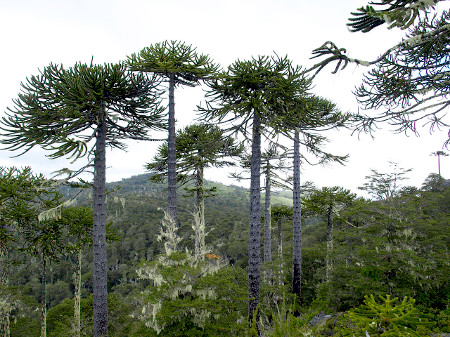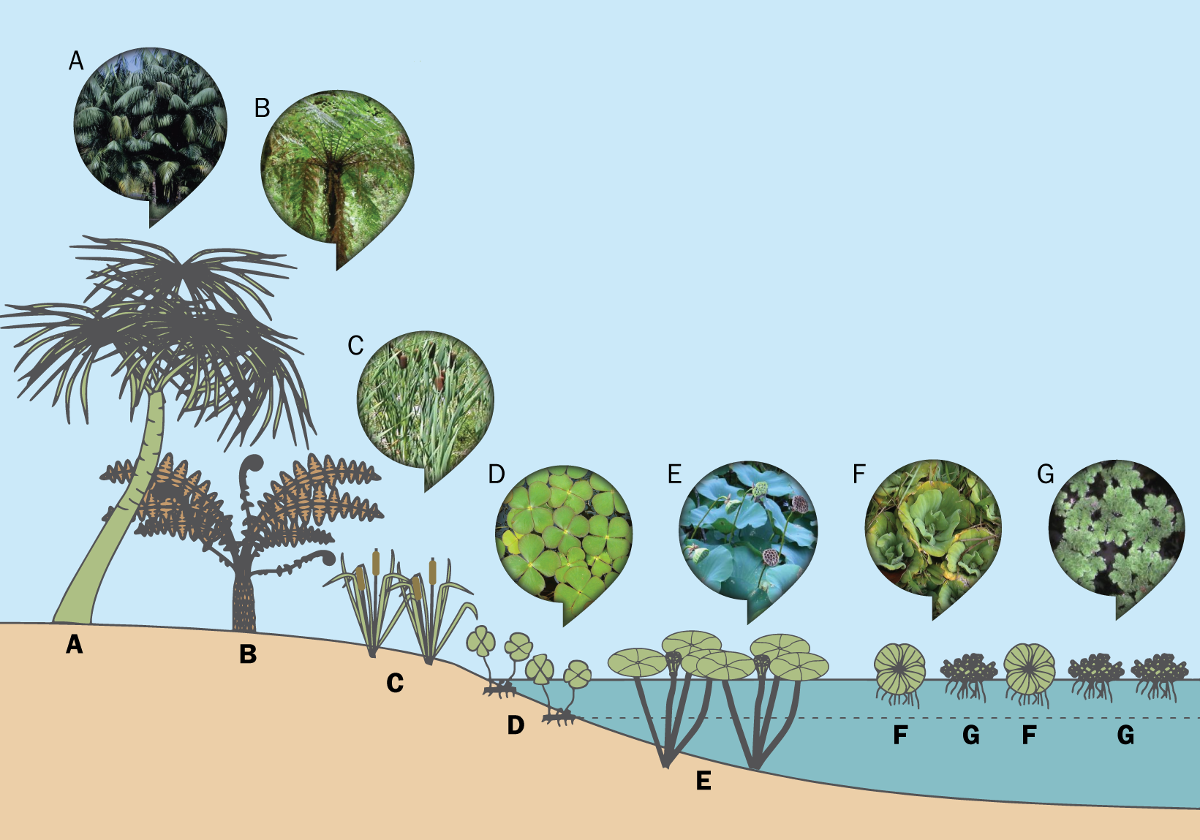Planting a Cretaceous Pond, South American Edition
If you close your eyes and visualize Mesozoic foliage, a few particular types of plants might spring to mind. There are probably some palm trees, a few ferns, a cycad (“sago palm”) or two, and if you are particularly in-the-know, a handful of monkey puzzles in the background.

Of course, this only represents the shadow of an ecosystem. Today’s plant communities are ridiculously diverse affairs, with distinct species found from habitat to habitat. The same presumably holds for the Mesozoic, and this is confirmed by the fossils that are known. Due to the vagaries of preservation, however, some environments are better represented than others. Nice deciduous leaves from big oak-like trees? There are plenty to go around! Aquatic plants? Much harder to come by (in part because some of their parts are more delicate and less likely to preserve). Historical research biases also can play a role–for various reasons, the Mesozoic plants of North America are pretty well-known, but many aspects of those from the southern hemisphere are less studied. Paleontologists sometimes also pay more attention to collecting “showy” palm fronds and other tree leaves, at the expense of the equally important but less photogenic plant fossils.
One Mesozoic plant community that is particularly poorly known is that of freshwater aquatic plants from South America. This is particularly vexing, because a number of nice fossil localities are known from the northern hemisphere, combined with the fact that a lot was happening with plants during the Cretaceous (145 to 66 million years ago). During this interval, angiosperms (flowering plants) exploded onto the scene. Although aquatic plants are often stereotyped as primitive moss, flowering plants are a pretty important and visible part of freshwater ecosystems (think water lilies, lotuses, and duckweed, to name a few). Thus, it would be really nice to know what was going on “down south”. Were the same kinds of plants dominant as on northern continents? Or was it a unique ecosystem, as seen for the dinosaurs of the time?
Several fossil plant localities from Patagonia, Argentina, hold a trove of new information on ancient aquatic plants. Rocks of the La Colonia Formation represent a coastal ecosystem from the very end of the age of dinosaurs, during the Late Cretaceous. Although many of the sediments show marine or brackish water conditions (as indicated by the vertebrate fossils and rock types), some beds clearly preserve environments with more drinkable(?) water. Among these rocks, beautifully preserved plants–including everything from pollen to algae to leaves, roots and rhizomes–document a mostly previously unknown world. Although there are leaves and pollen of obviously “land-dwelling” species (e.g., tree ferns, shrubs, and palm trees), most intriguing are the remains of definitively water-bound plants.

A paper authored by N. Rubén Cúneo and colleagues, published last week in PLOS ONE, describes, identifies, and interprets these fossil plants in some detail. Previous contributions have focused on specific elements of the plant community, but this is the first major attempt to reconstruct the aquatic ecosystem as a whole. And what cool plants have been uncovered! To name a few:
- Green microalgae (including some that form “pond scum”)
- Water ferns
- Lotuses
- Water cabbage relatives
- Cattail/bulrush relatives
So, what does this show? First, some of the plants (e.g., water ferns) are indicative of fresh water. Given the coastal nature of the rock deposits, this shows that the communities developed at times when saltwater was absent (even if relatively briefly). Furthermore, the types of plants are broadly similar to those found from the northern hemisphere at the same time. Many of today’s aquatic plant groups also show broad distributions, so not much has changed from the Mesozoic. Finally, the plants studied here are similar to plants that lived shortly after the big dinosaur extinction 66 million years ago. This suggests that the major global events and ecosystem changes didn’t make a permanent dent in the realm of aquatic botany.
Although the most cynical paleontologist might say the significance of this discovery is that we finally know what South American dinosaurs would have munched on if they waded into the water, the broader contribution of this study is even more exciting. Specimen by specimen, locality by locality, fossil assemblages such as the aquatic plants of Cretaceous Patagonia help us to better understand a fairly poorly known chapter of our planet’s life. There is a whole world to explore in those ancient ponds, wetlands, and marshes!

Citation
Cúneo NR, Gandolfo MA, Zamaloa MC, Hermsen E (2014) Late Cretaceous aquatic plant world in Patagonia, Argentina. PLoS ONE 9(8): e104749. doi:10.1371/journal.pone.0104749
